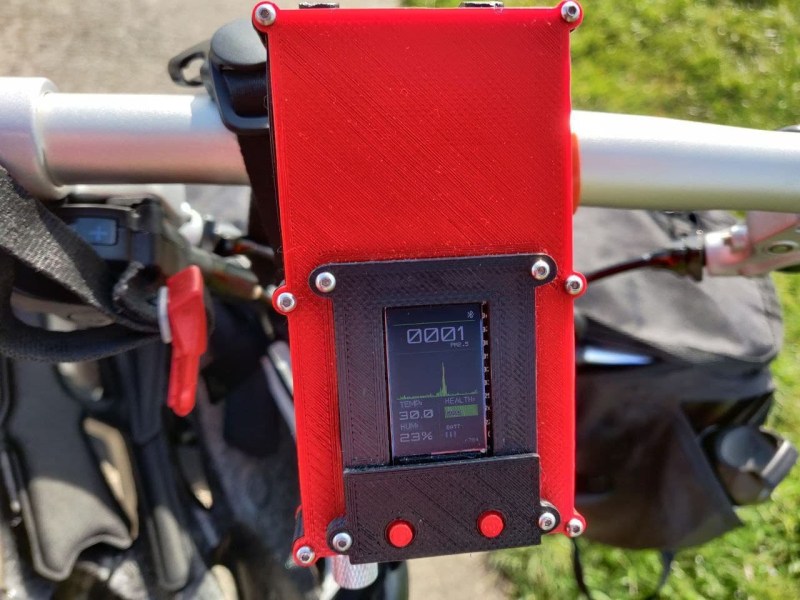Poor air quality is a major problem for city dwellers the world over. Dust, smoke, particles and noxious gases from vehicles, industry and agriculture makes many megacities downright hazardous to live in. Pinpointing the source of pollution and developing strategies for mitigation requires accurate data on pollutant levels, but obtaining these numbers is not always easy.
Enter CanAirIO, a citizen science project that aims to gather air quality data from around the world by putting sensors into the hands of as many people as possible. Its team has developed two different sensor nodes for this purpose: an indoor one that can measure CO2, and a mobile one that can measure particulate matter (PM) levels. Both versions are powered by an ESP32 microcontroller that reads out the air quality sensors and connects to the Internet using WiFi or BlueTooth. The data can then be shared online to create detailed maps showing local variations in air quality.
The design of the sensor nodes is fully open-source, allowing anyone with basic electronic skills to build them. The sensors are a Sensirion SCD30 for CO2 measurement and an SPS30 for PM levels. The mobile version comes with a neat 3D-printed enclosure that can be mounted on a bike’s handlebar, enabling the user to quickly gather data around their neighbourhood. A mobile app simplifies setting up the sensors and sharing the data.
The project has already been successful in gathering detailed data in the city of Bogotá, Colombia, and will no doubt prove useful in many other pollution hotspots around the world. We’ve seen similar community efforts to monitor air pollution and even radiation in various places, both showing how relatively simple devices can help to make a difference in people’s wellbeing.















But I suspect oppressive governments will not want information about air quality to be gathered and exported.
Excellent incentive!
That was the reason for starting this citizen measurement. In Bogotá, Colombia, my city we have a great pollution problem caused by the most famous BRT (Bus Rapid Transit) in the world that transports 1.4 million passengers every day with old and poorly maintained buses that produced large clouds of smoke. With low-cost sensors we produce citizen recognition and start a change.
Conceptually interesting. But what is the calibration regimen and how does it assure traceability? Without metrology, how can you possibly distinguish between variation in air quality and process variation in kit builds?
Don’t ask hard questions. People might get angry..
All joking aside, I worked on a project to do exactly this.. characterizing air quality sensors was our task, and it was quite difficult.
There’s a lot you can do with cross-sectional averages that helps, at least if you have a reference value to calibrate against and as long as the offset/scale isn’t changing over time.
Or maybe they’re only interested in looking at large changes where “holy crap, it’s bad here compared to there” suffices, rather than precise measurement to the 5th digit.
They certainly could benefit from a couple calibrated measurements, though. You have gear and are willing to fly to Bogota?
All you have to do is compare the readings you get to neighborhood-level readings from calibrated stations. You can even go stand next to the station and see what readings you get.
If you’re not writing a paper, you’re just monitoring to spot problems and changes, this is good enough. Lets not pretend that “they didn’t do metrology” is the same as, “their readings are actually wrong.”
I don’t know about all their sensors, but the particulate sensors I buy are already calibrated within a certain accuracy range.
The sensors are factory calibrated and the Sensirion SPS30 is MCERTS-Certified. We made comparisons with official stations using PM2.5 gravimetric sensors and R2 is acceptable (greater than 0.6) and with official optical sensors R2 increases to 0.9.
This open citizen science project focuses on showing citizen problems of air quality.